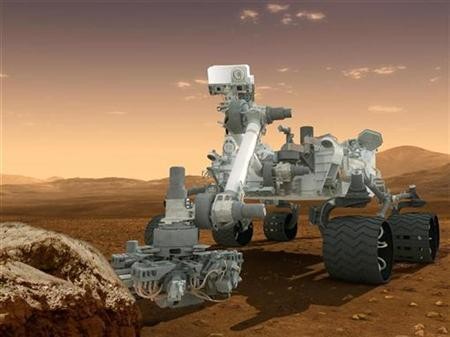NASA's Curiosity rover found nitrogen on Mars, suggesting that there could be terrestrial life on the planet.
Researchers submitted their paper in the Proceedings of the National Academy of Sciences this week. They reported that the Curiosity rover found compounds with oxidized nitrogen in samples taken from three different sites in the Gale Crater.
The scientists said that the samples from the 96-mile basin contained more nitrogen that most likely came from terrestrial instrument sources and that most of the nitrogen found was nitric oxide.
The research team is now theorizing that the nitric oxide buildup was released from nitrates that are decomposing, according to Discovery.
"Terrestrial life requires a fixed form of nitrogen for synthesis of crucial biomolecules, and the discovery of indigenous fixed nitrogen in Martian rocks and sediments has implications for the past habitability potential of Mars," the researchers wrote in the paper.
Jennifer Stern, the lead author for the study and a planetary geochemist at NASA, said that other scientists have been searching for carbon in the past, but nitrogen is also a crucial ingredient for sustaining life.
The samples were processed by the SAM (Sample Analysis at Mars) instrument by cooking them. The gas generated were analyzed and found the nitric oxide that is speculated to have come from nitrates, according to LA Times.
The samples from Mars still had a significant amount of nitrogen that is comparable to nitrates found in dry areas on Earth.
In addition, most nitrates are generated by living things on Earth. Stern said that they needed to see whether Mars is still generating nitrates.
The news follows after water has been discovered on the red planet, reinforcing theories that there might be life on Mars.



























